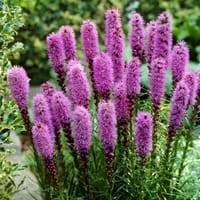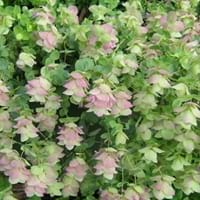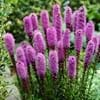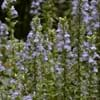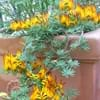Life Span
Perennial
Perennial
Origin
Northeastern United States, Mid-Atlantic United States, Southeastern United States, North-Central United States, Central United States, South-Central United States, Southwestern United States, Canada
Hybrid origin
Types
Not available
Kent Beauty
Amethyst Falls
Barbara Tingey
Number of Varieties
Not Available
Habitat
marshes, meadows, Slopes, Upland savannas
Grassland, Open scrub, Rocky areas
USDA Hardiness Zone
4-9
5-8
Sunset Zone
A1, A2, A3, H1, H2, 1a, 1b, 2a, 2b, 3a, 3b, 4, 5, 6, 7, 8, 9, 10, 14, 15, 16, 17, 18, 19, 20, 21, 22, 23, 24
Not Available
Habit
Upright/Erect
Clump-Forming
Minimum Height
Not Available
Flower Color
White, Purple, Pink
Pink
Flower Color Modifier
Bicolor
Bicolor
Fruit Color
Not Available
Not Available
Leaf Color in Spring
Light Green
Dark Green
Leaf Color in Summer
Light Green
Dark Green
Leaf Color in Fall
Light Green
Dark Green
Leaf Color in Winter
Light Green
Light Green
Leaf Shape
Lance shaped
Oval
Plant Season
Summer, Fall
Summer, Fall
Sunlight
Full Sun
Full Sun
Type of Soil
Clay, Loam, Sand
Loam
The pH of Soil
Acidic, Neutral, Alkaline
Neutral, Alkaline
Soil Drainage
Well drained
Well drained
Bloom Time
Summer, Late Summer, Early Fall
Late Summer, Early Fall
Tolerances
Drought
Drought
Where to Plant?
Ground
Container, Ground, Pot
How to Plant?
Divison, Seedlings
Seedlings
Plant Maintenance
Low
Medium
Watering Requirements
Do Not over Water, Medium
Allow soil to be completely dry in between waterings, Does not require lot of watering, Water twice a day in the initial period, Water when soil is dry
In Summer
Lots of watering
Lots of watering
In Spring
Moderate
Moderate
In Winter
Average Water
Average Water
Soil pH
Acidic, Neutral, Alkaline
Neutral, Alkaline
Soil Type
Clay, Loam, Sand
Loam
Soil Drainage Capacity
Well drained
Well drained
Sun Exposure
Full Sun
Full Sun
Pruning
Cut or pinch the stems, Remove damaged leaves, Remove dead branches, Remove dead leaves
Remove damaged leaves, Remove dead branches, Remove dead leaves
Fertilizers
Balanced garden plant fertilizer
All-Purpose Liquid Fertilizer
Pests and Diseases
Gray mold, Verticillium Wilt
Red blotch
Plant Tolerance
Drought
Drought
Flower Petal Number
Single
Single
Fragrant Leaf
No
Not Available
Foliage Texture
Fine
Fine
Foliage Sheen
Matte
Matte
Attracts
Butterflies, Hummingbirds
Butterflies
Allergy
Dizziness, Nausea
Not Available
Aesthetic Uses
Beautification, Cottage Garden, Showy Purposes
Showy Purposes
Beauty Benefits
Good for skin
Not Available
Environmental Uses
Air purification
Air purification
Medicinal Uses
Anodyne, Antibacterial, Astringent, Diarrhea, Diuretic
Bloating, Bronchitis, Cough, Cramps, Croup, Gastrointestinal disorders, Headache, Rheumatoid arthritis, Urinary tract problems
Part of Plant Used
Leaves, Root
Leaves
Other Uses
Repellent, Used as a general tonic
Employed in herbal medicine, Used As Food
Used As Indoor Plant
No
Yes
Used As Outdoor Plant
Yes
Yes
Garden Design
Cutflower, Feature Plant, Mixed Border, Wildflower
Container, Edging, Groundcover, Mixed Border
Botanical Name
LIATRIS spicata
ORIGANUM 'Rose Dome'
Common Name
Gayfeather, dense blazing star, prairie gay feather
Ornamental Oregano
In Hindi
Gayfeather
सजावटी अजवायन
In German
Gayfeather
Ornamental Oregano
In French
Gayfeather
ornement origan
In Spanish
Gayfeather
Ornamentales orégano
In Greek
Gayfeather
καλλωπιστικά Ρίγανη
In Portuguese
Gayfeather
ornamental Oregano
In Polish
Gayfeather
ozdobne Oregano
In Latin
Gayfeather
decentius Oregano
Phylum
Magnoliophyta
Not Available
Class
Magnoliopsida
Magnoliopsida
Order
Asterales
Not Available
Family
Asteraceae
Lamiaceae
Clade
Angiosperms, Asterids, Eudicots
Angiosperms, Eudicots
Tribe
Eupatorieae
Mentheae
Subfamily
Asteroideae
Pitcairnioideae
Number of Species
Not Available
Season and Care of Gayfeather and Ornamental Oregano
Season and care of Gayfeather and Ornamental Oregano is important to know. While considering everything about Gayfeather and Ornamental Oregano Care, growing season is an essential factor. Gayfeather season is Summer and Fall and Ornamental Oregano season is Summer and Fall. The type of soil for Gayfeather is Clay, Loam, Sand and for Ornamental Oregano is Loam while the PH of soil for Gayfeather is Acidic, Neutral, Alkaline and for Ornamental Oregano is Neutral, Alkaline.
Gayfeather and Ornamental Oregano Physical Information
Gayfeather and Ornamental Oregano physical information is very important for comparison. Gayfeather height is 60.00 cm and width Not Available whereas Ornamental Oregano height is Not Available and width Not Available. The color specification of Gayfeather and Ornamental Oregano are as follows:
Gayfeather flower color: White, Purple and Pink
Gayfeather leaf color: Light Green
Ornamental Oregano flower color: Pink
- Ornamental Oregano leaf color: Dark Green
Care of Gayfeather and Ornamental Oregano
Care of Gayfeather and Ornamental Oregano include pruning, fertilizers, watering etc. Gayfeather pruning is done Cut or pinch the stems, Remove damaged leaves, Remove dead branches and Remove dead leaves and Ornamental Oregano pruning is done Remove damaged leaves, Remove dead branches and Remove dead leaves. In summer Gayfeather needs Lots of watering and in winter, it needs Average Water. Whereas, in summer Ornamental Oregano needs Lots of watering and in winter, it needs Average Water.
